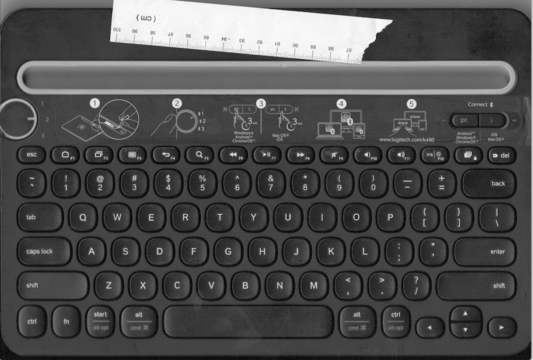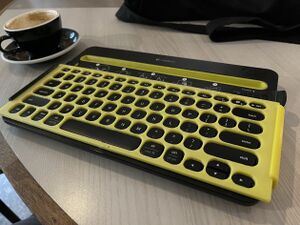Another day and another device to 3D print.
We received a request to design a keyguard for a person with Parkinson's. If you or someone you know has Parkinson's disease, typing on a keyboard can sometimes be a challenge. A keyguard is an assistive device that can make typing a lot easier. It acts as a physical barrier between the keyboard keys and your hands, helping to guide you to the correct keys and reducing the likelihood of incorrect keystrokes. For those with Parkinson's who experience tremors or difficulty with fine motor control, a keyguard can be a valuable tool for maintaining their ability to communicate through written means.
However a keyguard is useful for anyone that needs a little assistance with typing. It can be used for people with visual impairments to delineate the separation between keys.
- Step 1: Search the internet for 3d models for the Logitech k480
- Step 2: Find nothing
- Step 3: Finally find a model but its $49
- Step 4: Establish an entire pipeline to avoid paying $49
We quickly realised that if we were to manually design a keyguard, it would take ages and we would eventually have to redo the entire process when a new request comes in. Thus we came up with a process to scan a keyboard with a standard photocopier and generate our 3d files from there.
A photocopier is a common household item as opposed to a 3d scanner. This would mean that the social service agency and even individuals could send us requests without fancy equipment.
With a scanned photo we have a 2d plane of our keyboard layout and all we have to do is adjust for scale and extrapolate out a keyboard

We scanned the keyboard and added a ruler so as to adjust the scale.
The following steps can be done in photoshop or most photo editing softwares. One of our favourites is Pixlr which is a free alternative in the browser.
The next step would be to increase the brightness and contrast which gives us a sharp border around the keys
We can then use an invert mask to select the inner portion of the keys.
We can then fill the inner portion with a color and export the file as an SVG.

Upload the SVG into TinkerCad to extrude a keyguard
https://www.tinkercad.com/things/4vojjceaumT
File:Rounded K480 keyguard split.stl
Download a 3D printable STL

We also designed a clamp that can be used with elastic bands or rubber bands to hold the keyguard flush against the device:
https://www.tinkercad.com/things/5T3Wg0eRTCH
File:Strapless k480 keyguard clamps.stl
--[edit | edit source]
Feedback from Occupational Therapist[edit | edit source]
- We noted that some edges are a bit sharp. May be good to to keep to rounded corners / edges for safety reasons (like the bottom ones that you have done).
- We did notice how there is a difference in the spacing of the keys and the keyguard on top. At the moment, to us, it does not seem to cause much of hinderance – but once again – client trials will only tell us more on this.
- The clip-ons seem to slide up and down if the keyboard is held or moved around. Since this keyboard will be stationary most of the time, I do not foresee it to be an issue. However, for other clients or for Keyguards on iPads – this may be a potential issue, since the keyguard and clips will likely slip off.
- The elastic bands worked well in the design, and I liked that they weren’t too thick (thereby not unbalancing the keyboard). However, the keyboard kind of slips on the table if pressure if placed on it. I wondered if non slip type of elastics/bands could be used instead, to ensure that it won’t slip?
- Personally, I liked the yellow colour, since it stands out. However, practically we have to see what colors really suit our clients and only with trials can be share more about the client's preference on this.
- An area of some concern, as we explored the prototypes for a bit, was the sturdiness of the keyguard. Given that it is two pieces joined together, we noted that with little pressure, they can give way or snap. It is of concern, since we needed such keyguards to be a bit sturdy to ensure clients can use it, even if their movements are not soft or gentle. Caregivers who place the keyguard on the systems may also be scared to handle them if they are delicate. We weren’t sure if this was because they were too thin as well.
Second (second) Iteration[edit | edit source]
The scanned approach leaves behind many artefacts in the SVG that requires manual cleanup, an OpenSCAD version of this would be preferable. To help with this we chanced upon this brilliant little tool: